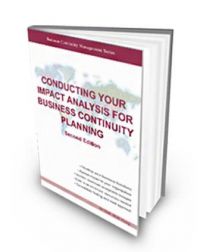Guidance Notes-DR-AIA: Difference between revisions
(No difference)
|
Latest revision as of 15:22, 1 January 2022

Application Impact Analysis Methodology
When implementing the Application Impact Analysis (AIA), it is important to note that the current technique is to approach from a business perspective.
The traditional AIA approach is to list all the application systems and to prioritise them based on the business units' feedback on their criticality. The recommended approach is to work with the Business Continuity Management team and to have access to the Business Impact Analysis or BIA report. The prioritisation can then be driven by the approved BIA findings which depict the actual and agreed criticality of the application based on the prioritisation of the critical business functions.
As part of the Business Impact Analysis (BIA) phase, one method of gathering the necessary data for the analysis of an organization's critical business functions is the used of a Business Impact Analysis Questionnaires (BIAQ).
Guidance Notes to Complete the Business Impact Analysis Template

- This content of this section will serve as a guide to assist Business Unit (BU) BCM Coordinators to complete their Business Impact Analysis Questionnaires (BIAQ)
- These Guidance Notes are supplementary notes given to the Business Unit (BU) BCM Coordinators during the workshop held on “How to complete a BIA Questionnaire?”

Content of BIA (AIA) Questionnaires
- Cover Sheet
- Part 1: Corporate MBCO & Key Product and Services
- Part 2: Identification of Business Functions
- Part 3: Impact Area of Business Functions
- Part 4: Impact Over Time Of Business Functions
- Note: Part 5 is most relevant to the IT DR Professionals
- Part 5: Supporting IT Systems and Applications
- Part 6: Inter-dependencies
- Part 7: Vital Records
Back
Useful Link and related terms
